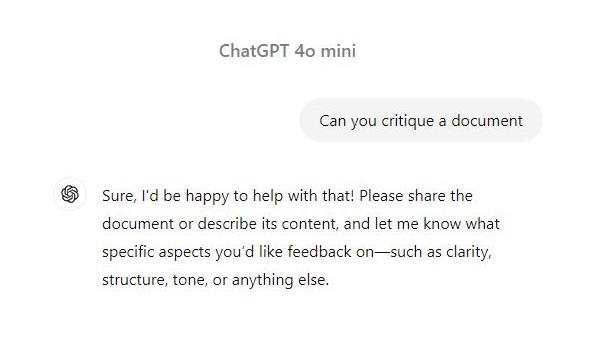Commissioners to take up rural housing report Sept. 24
4 min read
Public comments offer sharp criticism of recommendations from a county-commissioned report. During public comment to county commissioners Sept. 17:
Lauri Segel: My name is Lauri Segel, I’m here today to comment on a document that’s posted on the board’s website, titled “Housing Barriers Report for 9-24-24 meeting.”
[00:00:22] This document was authorized by three commissioners who didn’t blink at the price tag of $60,000, which exceeded bids from qualified consultants with experience and no conflicts of interest. Three commissioners were so unconcerned about the lack of qualifications from Mr. Howe and Mann, they didn’t bother questioning the demand for half of the $60,000 upfront, which none of the qualified consultants asked for.
[00:00:47] Anyway, now you have your desired product, which appears to be nothing more than a sloppy hit job on the county’s Land Management Division—the same county department where both consultants worked for decades. If any reader of this document has the tenacity to make it all the way through, they’ll have learned nothing.
[00:01:06] The most significant omission is any attempt to define or otherwise characterize what is meant by the constant refrain of affordable rural housing. It seems obvious that in order to identify barriers, they first need to identify what they mean by rural affordable housing. For example, whether talking about barriers to new or existing affordable rural housing, they should have considered external costs such as income, the price of land, building materials, labor, utilities, property taxes, insurance, distance to work and services, for example.
[00:01:44] Furthermore, the document is void of any analysis of anything. Merely stating a table with cut and paste portions from one year’s worth of a single type of planning director decision is ‘a detailed analysis’ does not make it so. The document should have reported on the number of dwellings the county has approved in the various zones that allow dwellings, either conditionally or outright, and the status of those approvals.
[00:02:10] Possibly the most useless section is the so-called interviews with attorneys, consultants, and owner applicants. If your consultants wanted an unbiased population to answer their poll, they should have put questionnaires out at the planner-on-duty stations, rather than only talking to disgruntled clients of the attorneys who work with the consultants.
[00:02:33] One last point: The University of Oregon’s Institute for Policy Research and Engagement recently produced a brief titled, ‘Barriers To Housing Production in Oregon’ for the Department of Land Conservation and Development. You should check out what a valid study of the issue looks like. Thank you.
[00:02:56] Jim Babson: This is Jim Babson. The Howe-Mann report on ‘Barriers to Affordable Housing’ is finally available for public viewing, and it’s as disappointing as we expected it to be.
[00:03:06] Howe and Mann’s conclusions were preordained, which is why they were selected over the other more qualified vendors. The Board of Commissioners majority hired them to recommend changes to county code, changes to state law and changes to LMD procedures in order to further the goal of urbanizing rural lands.
[00:03:27] And Howe and Mann did just that. The most glaring deficiency of the study is that it never defines affordable housing. The type of rural housing that Howe and Mann are championing will never be affordable, no matter how you define that word. They are equating rural affordable housing with sprawl. Howe and Mann demonstrated that they were uniquely unqualified to prepare this report.
[00:03:52] One reason it took a year to complete is that it took months for them to set themselves up as a legitimate business, never having done this type of work before. The finished product is wholly unreadable with mysterious page numbering, references that refer to nowhere, and irrelevant attachments. The report is written in the form of an outline, I guess, but it’s a jumble of opinions, conclusions, and cherry-picked data.
[00:04:20] I pity anyone who seriously tries to read it carefully. This report was a complete waste of $60,000 of taxpayer money. Thanks for listening.
[00:04:30] John Q: Seeking a neutral third-party response, we enlisted ChatGPT. The artificial intelligence tool recommended five improvements, but it also praised four strengths of the report.
[00:04:41] ChatGPT: Here’s a critique of the land-use recommendations you provided, focusing on clarity, implementation feasibility, and strategic alignment.
[00:04:49] Strength number 1. Comprehensive Focus on Housing Affordability: The recommendations emphasize affordable housing, addressing key areas such as Urban Growth Boundaries (UGBs), middle housing codes, and rural residential zoning (Recommendations 1-6). The emphasis on fairness and equitable outcomes is commendable.
[00:05:08] Strength number 2. Proactive Customer Service: The idea of proactive customer service for the Lane County Land Management Division is forward-thinking. Setting a clear goal (Recommendation 7) for improved service delivery could result in streamlined processes, and enhanced customer satisfaction.
[00:05:26] Strength number 3. Thoroughness in Application Processes: Recommendations like revising the LLV application (Recommendation 14), and engaging customers in form revisions (Recommendation 15), show a desire for transparency and inclusivity. Giving applicants access to a knowledgeable planner before submission (Recommendation 16), is a practical measure to reduce errors and delays.
[00:05:46] Strength number 4. Coordination and Resource Allocation: Assigning a dedicated position (Recommendation 12) to coordinate updates related to LUBA and court decisions, as well as zoning updates, shows an understanding of the need for focused accountability and consistency.
[00:06:02] John Q: A report on barriers to rural housing draws sharp criticism, but a neutral third party, ChatGPT, sees a lot to like. The full analysis is available online. Commissioners will discuss the report next Tuesday, Sept. 24.



